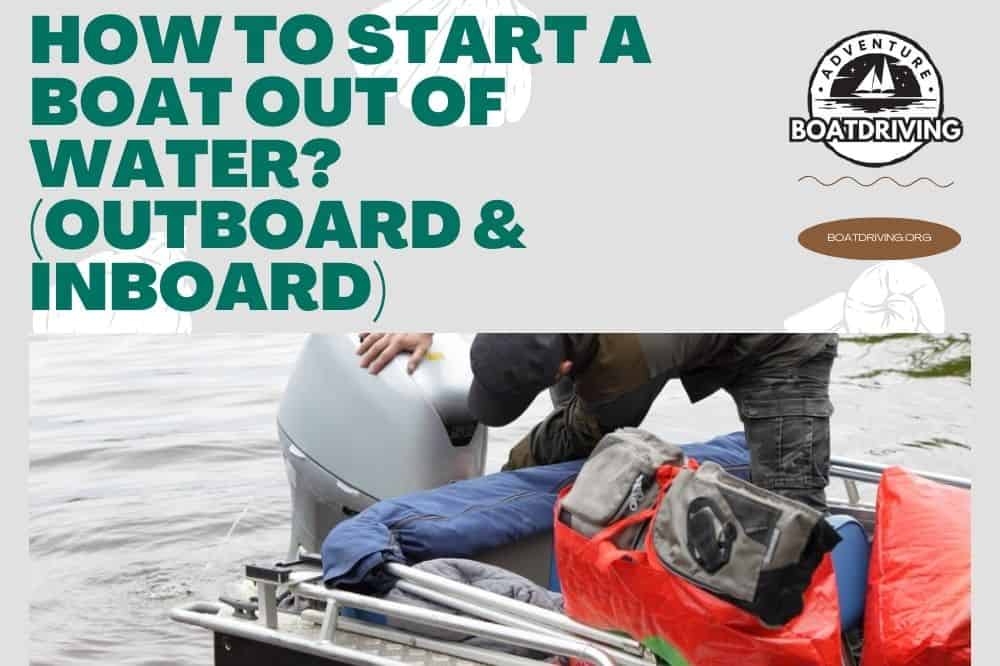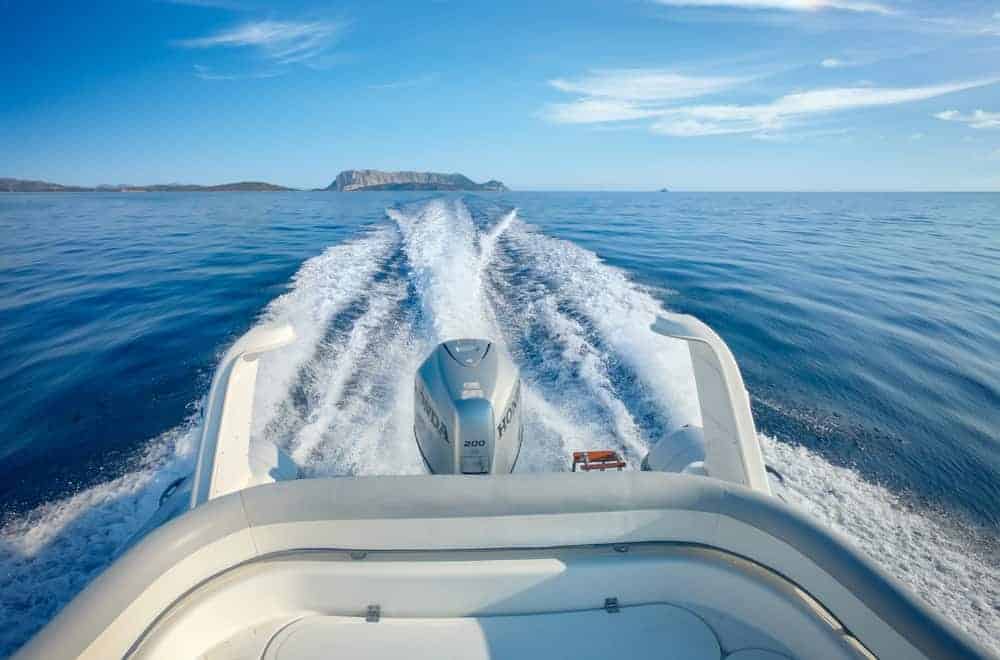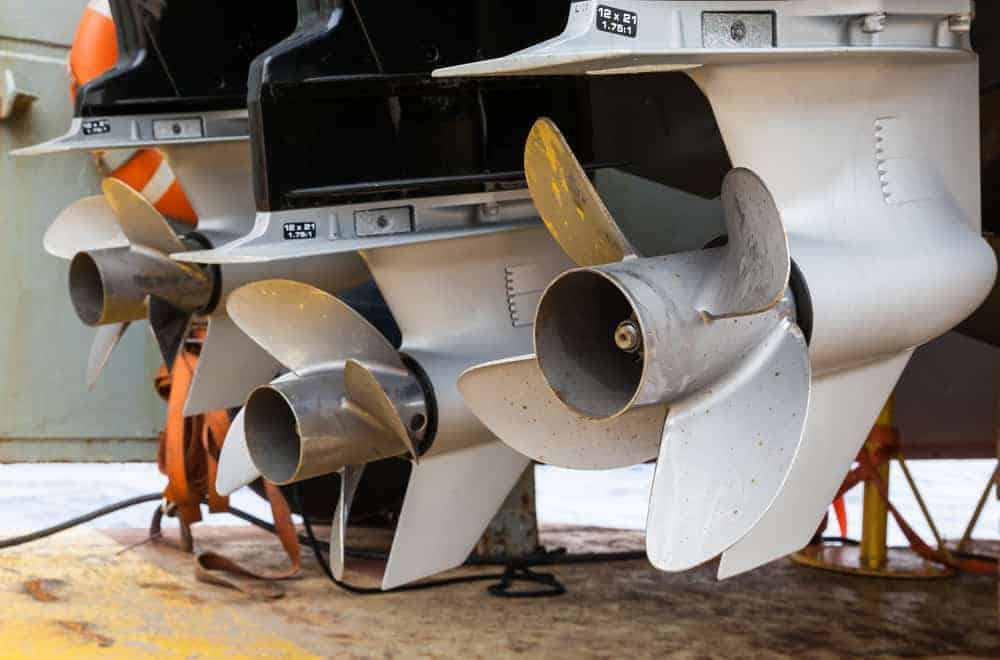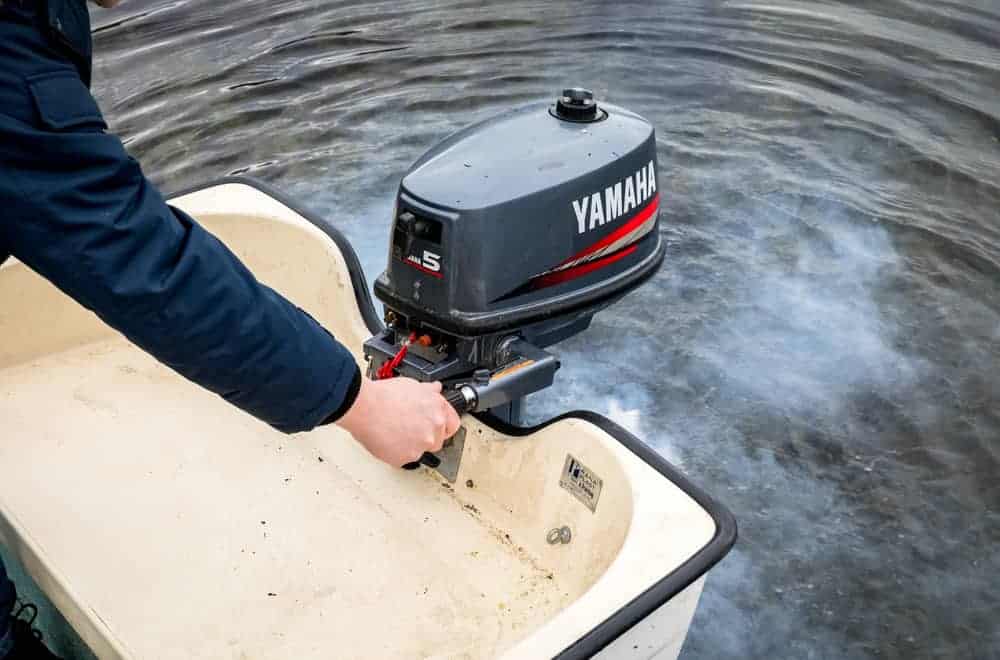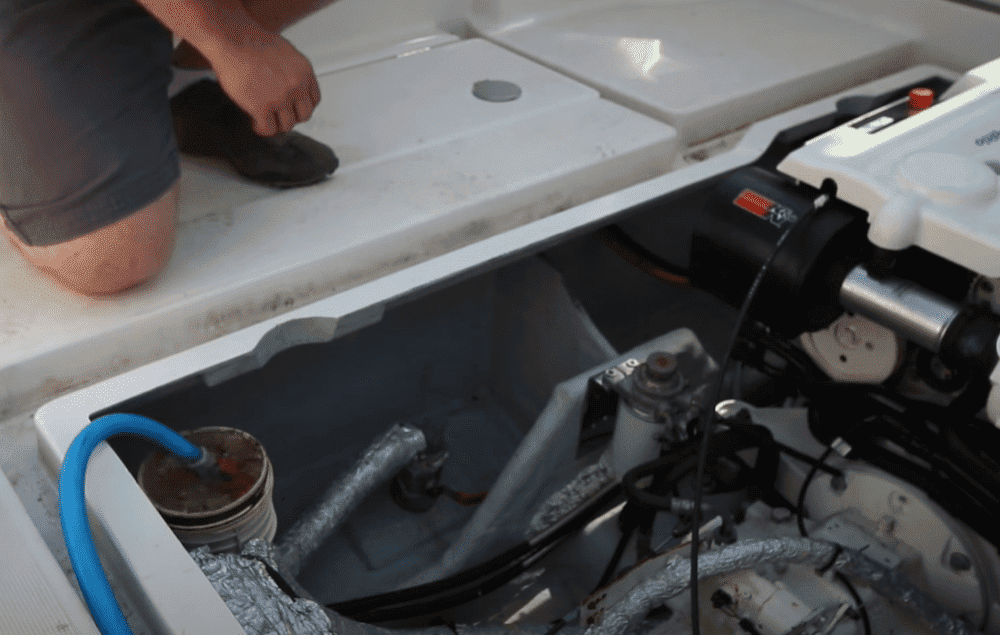If not done correctly, starting a boat motor outside of the water could result in hundreds of dollars in replacement parts-if not, a new engine.
But, if you need to run a performance check on your boat’s engine after completing some in-garage repairs, running the engine out of the water may be warranted.
In this article, we will discuss three key points: (1) the biology of your boat motor, (2) the damage that can occur from dry-starting a motor, and (3) how to start a boat motor out of the water properly.
Table of Contents
Biology Of The Marine Motor
Whether you run an inboard, sterndrive, or outboard motor on your boat, one thing remains the same- its design requires a flowing water source to function.
Marine motors inherently require water as the main ingredient for cooling down those engines that are hard at work supporting your boating intentions.
Whether you run your boat at top speed, require quick jumps across the lake for checking various fishing holes, or like to cruise along the coast to find a secluded area to relax and entertain friends, your boat motor is a rugged machine that powers through it all.
Your boat motor has hundreds of moving parts, all that need lubrication to ensure smooth and efficient movement. In addition, all this movement generates friction and heat, which needs to be cooled down to prevent over-heating.
I already mentioned that there needs to be a flowing water source available when starting a boat motor. Marine motors have a raw water pump that utilizes a flexible impeller.
An impeller is “a rotor that creates an intrinsic sucking force, as part of a pump set up.” So, as your boat motor is running, the impeller sucks up water from outside of the boat for the pump to distribute throughout the boat’s plumbing system.
PRO-TIP: For more information about selecting the suitable impeller and replacement, please read this article published by WestMarine.
The primary function of the impeller is to cool down your boat engine when in use. But, believe it or not, just a few seconds of running a boat motor in a dry state could seriously damage its internal components- the first to go will be the motor’s impeller.
Damage Report From Dry-Running A Boat Motor
An impeller looks like a rubberized gear that sits inside your engine’s water pump. Like metallic gears, the tips are delicate, so problems will arise once there is damage to its rubber vanes.
On a boat’s water pump, an impeller undergoes regular wear and tear aggravated further when presented with abrasive materials. For example, if your boat usually runs in sandy waters, the tiny particles of sand will cause the impeller to wear out faster.
Often, boat owners experience faulty impellers due to long periods of inactivity; just like muscles atrophy when not in use, the rubberized impeller can become brittle if not used and lubricated.
And lastly, an impeller can be damaged in seconds if run without exposure to a water source. But that’s not all; if a marine motor is running in a dry state, it is susceptible to overheating, which can have a catastrophic end for your engine.
Under normal circumstances, it would be wise to replace the impeller every two to three years, or 300 operating hours. However, if you know your boat has been running in sandy waters, please consider replacement earlier.
On the other hand, if you follow a strict maintenance program, you may even choose to replace this essential part annually for approximately $350 (parts and labor).
In either case, for optimal performance, you should contact your engine’s manufacturer for recommendations on how often to change the impeller.
How To Start My Boat’s Engine Out Of The Water?
Whether your boat has an inboard, sterndrive, or outboard motor, the primary concern ought to be the presence of flowing water. While the concept is similar, there are some distinct differences in the procedures based on the type of vessel.
If you find yourself needing to start your boat’s engine outside of its primary water environment, please read on to find out what you should know Before You Get Started.
Then be sure you are aware of What You’ll Need and follow all the steps necessary to keep you and your engine free of risk and damage.
Before You Get Started
For safety reasons, when needing to start your boat’s engine out of the water, please follow these pro tips:
- Find a flat area– whether you will be performing maintenance outside or within a garage setup, be sure that you have parked the boat in a flat area. Also, remember that the boat needs to be high enough to have easy access to the water intake.
- Properly fit plunger or flusher– depending on your engine configuration, be sure to utilize the proper accessory for providing water to your engine’s impeller. Also, ensure its snug and proper fitment to mitigate the risk of damage to your motor.
- Flowing water– is critical to running your boat engine out of the water. Please be sure to initiate water flow before starting your engine. Likewise, you must turn your engine off before closing off its water source.
- Consult your manufacturer– for recommended time limitations for running your boat’s engine with a secondary source of water.
What You’ll Need
The water intake location will vary depending on whether you run an inboard, sterndrive, or outboard engine. A secure fitment of either a plunger or flusher to your engine’s water intake is perhaps the most critical aspect of this operation.
- Motor Flusher: There are several different sizes and styles of flushers designed to fit the water inlet cavity of your engine. Be sure to consult with your engine’s manufacturer and follow their specific recommendations based on make and model.
- Cupped Muff Plunger: Also known as a “fake-a-lake,” this tool looks like a toilet plunger designed to cover the water intake hole at the underside of your boat’s hull.
- Hose Attachment: This attachment is necessary to connect a hose to the flusher or plunger.
- Running Water: Again, ensure you have nearby access to running water.
- Large drum or tub: When running outboards, you may use a 50-gallon plastic drum or 150-gallon tub to provide water for your maintenance run.
Universal Motor Flusher
Offered by FiveOceans, the Universal Motor Flusher is suitable for both outboard and sterndrive applications. The flusher, priced at $20.49, allows you to perform on-land engine test runs and other maintenance procedures without damage to your motor.
The clamps come spring-loaded for tight fitment over your engine’s intake. In addition, the kit supplies a 3/4 inch threaded attachment to which you connect your hose.
Another benefit to this particular product is that it offers better flow across your engine due to its dual-input design.
Adjustable Engine Muff Plunger
WestMarine supplies an adjustable engine muff plunger for inboard motor applications.
In addition, it features a toilet-style plunger attached to the end of a telescoping tube for your maintenance convenience. You must connect a hose via its 3/4 inch threaded fitting like inboard flushers.
Starting Outboard/Sterndrive Motor Out Of The Water
Before attempting an engine run out of the water, ensure to park your boat in a flat spot and that the environment is safe, especially if you have pets or children nearby.
- Find your outboard or sterndrive motor’s water intake. These should be just above the propeller shaft.
- Follow supplied instructions to attach the universal motor flusher to the engine securely. Any partially covered vents will cause water leakage and air intake-neither of which are good for your motor.
- Straighten out your garden hose and attach it to the motor flusher 3/4 inch fitting. Ensure that the garden hose is tight and secure.
- Ensure your engine is in the upright position (not in tilt).
- Turn on your garden hose, ensuring that the water flow is solid and consistent.
- It is now safe to start your outboard or sterndrive motor with water flowing. You will notice water slowly flowing down from the motor flusher and water squirting out of the outlet.
- Keep a keen eye on the motor flusher throughout the engine run to ensure it has not moved. Also, it is crucial to refer to your console and ensure you do not notice any irregularities on the temperature gauge.
- Upon completing the engine test or flushing procedure, be sure to turn your engine off first. Then turn off the water supply. The last step should be removing the motor flusher from your engine.
Starting Inboard Motor Out Of The Water
It is essential to check the area for safety hazards before beginning any maintenance procedure on your boat. Once the area is clear and you have your boat positioned in a safe place, proceed to follow these steps for running your inboard motor out of the water.
- Go underneath your boat and locate its water intake hole.
- Wet the rubber on the adjustable muff plunger and place it over the opening, leaving no open space.
- Adjust the telescoping leg attached to the plunger to create a tight wedge between the intake hole and the ground.
- Roll out your garden hose and securely fasten it to the muff plunger’s 3/4 inch fitting. Ensure that the plunger still has a tight fit over the water intake hole.
- Turn on your garden hose, ensuring that the water flow is solid and consistent.
- Safely start your inboard engine. Throughout the run, periodically check that plunger for secure fitment. Be sure your temperature gauge does not exceed 200 degrees Fahrenheit. If you see the temperature creeping past this limit, shut down immediately.
- Upon completing the engine test or flushing procedure, be sure to turn your engine off first. Then turn off the water supply. The last step should be removing the motor muff plunger from your engine.
Conclusion
If you follow the steps outlined above, you can start your boat’s engine outside of the water without causing any damage to the motor. However, be sure to take this procedure seriously and always place your safety first.
I always recommend that you first consult your engine manufacturer for their specific advice on any procedure or maintenance action you wish to perform.
Should you feel uncomfortable running your boat motor on dry land, please hire an experienced professional to check your engine before putting it back in the water.
If you have further questions or concerns about how to start a boat engine out of the water, please be sure to leave them in the comment section below.

Joseph Fabiano is a writer, nature enthusiast, and stay-at-home father of two wild and free boys. He enjoys starting his day with a good run, hot mug of coffee, and a jump in the Ionian Sea, no matter the weather. Currently based in the Apuglia region of southern Italy, he enjoys discovering the world with his best traveling buddies (his little monkey’s and beautiful wife) at every given opportunity. Every trip, long or far, should be made an adventure according to Joseph as he believes inspiration and creation is right in front of you.
